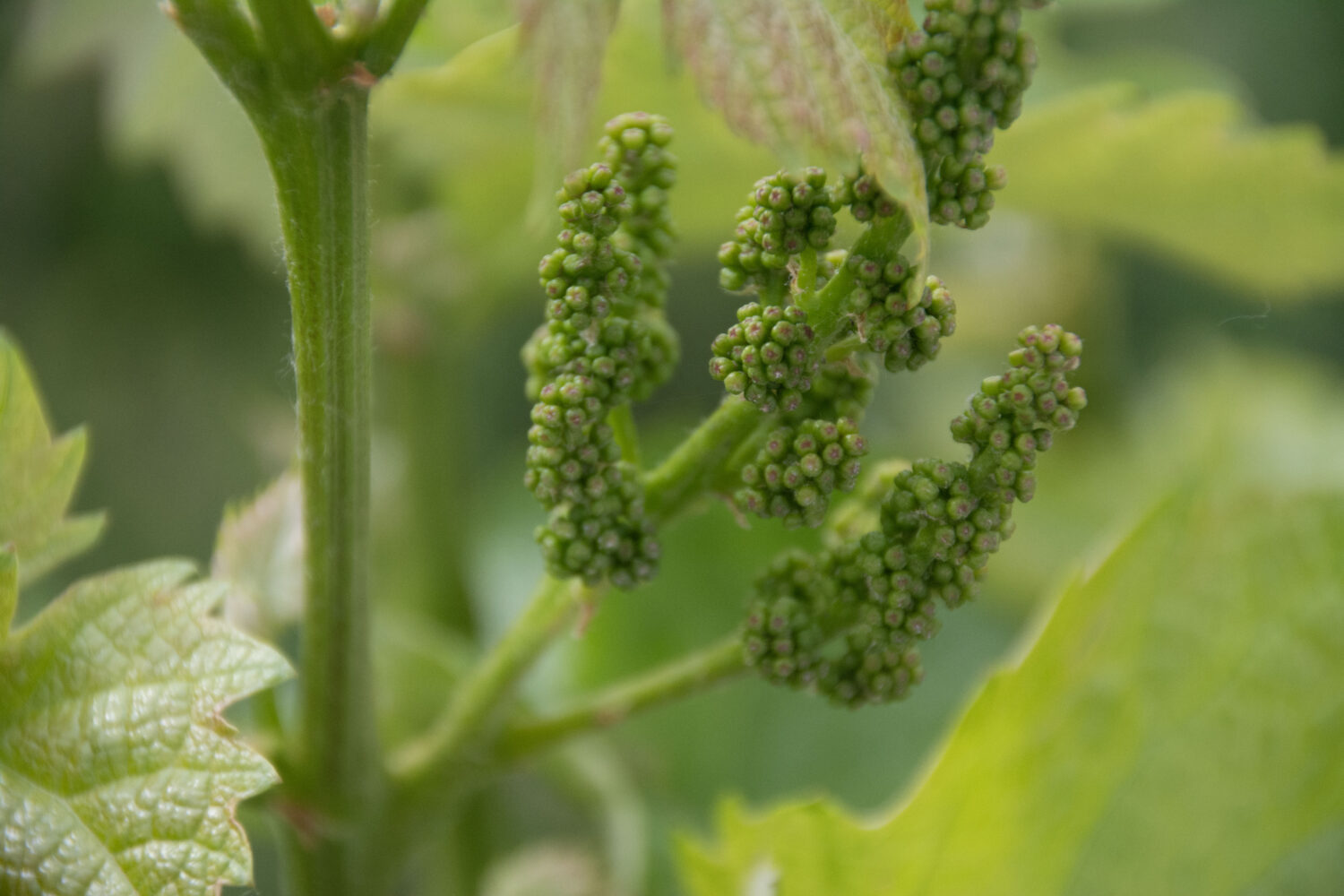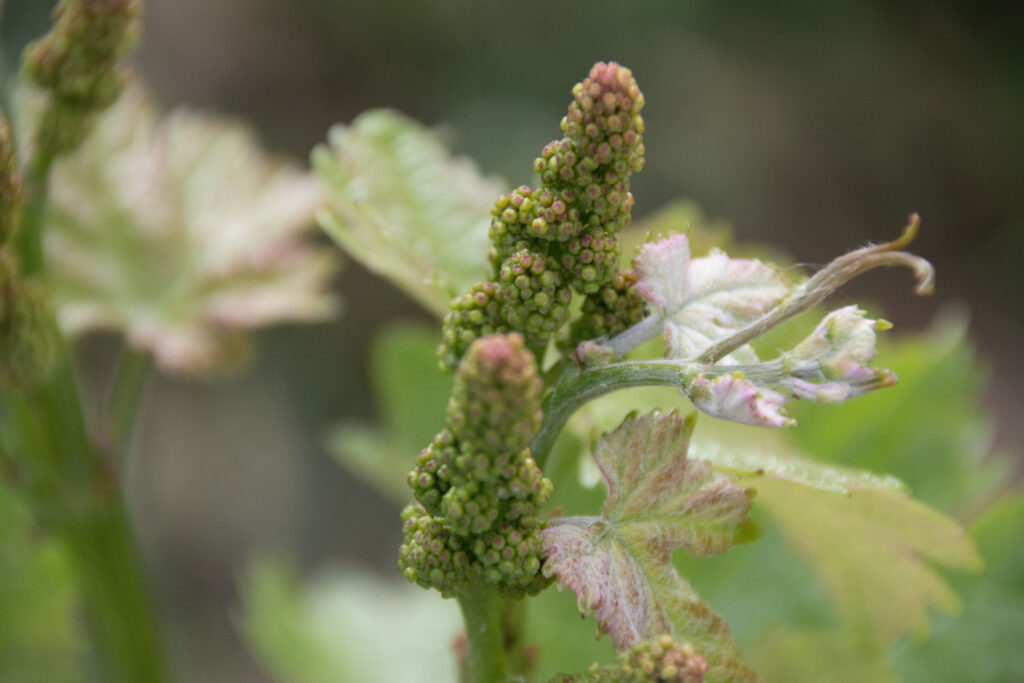With the arrival of May and June, the vineyards of CLOS PONS transform into a stage where each grape variety performs its own flowering melody. During this crucial period, tiny white flowers emerge, marking the beginning of a promise of fruits that will define the next harvest.
Flowering is one of the critical stages in any crop, and it is no different for grapevines. The stage indicates various aspects related to the current year, the vine’s condition, and more. For example, it provides valuable information about the potential early or late harvest, in addition to the bud break date. As we approach ripening, we gain a more precise estimate of the harvest date through veraison and ripening checks.
In our case, flowering occurs in stages because our vineyard boasts a significant number of grape varieties. Weather conditions during this time are crucial for successful pollination and fruit set. Extremely hot days or prolonged periods of rain and humidity are unfavorable (remember that grapevines are “anemophilous,” meaning they are wind-pollinated, unlike showy flowers that rely on insects). Rain reduces pollen concentration in the atmosphere.
Simultaneously, excessive rain can hinder fruit set, potentially leading to a loss of yield due to flower shatter. This phenomenon is particularly common in both red and white Grenache. Maintaining a healthy vine helps mitigate this effect, which we strive for year after year.

Flowering also signals a change in irrigation management. From this point onward, we reduce water availability to the plant, which has been well-watered until now. We also take advantage of flowering to apply sulfur treatments. Sulfur acts as a fertilization stimulant while combating the most common vineyard pest, powdery mildew (which we discussed in our previous blog article: “An Integrated Strategy: Sustainable Practices in Vineyard Pest Prevention”).
At CLOS PONS, the diversity of our grape varieties, including the recently introduced Malbec, fully expresses itself during flowering. Each variety, with its unique characteristics, responds differently to climatic conditions, resulting in a mosaic of flowering times and shapes. For instance, Malbec is known for its vigor and uniform-sized grapes with a dark blue-black skin, promising intense, tannin-rich red wines. Meanwhile, other varieties in our vineyards, situated between 500 and 700 meters above sea level, benefit from the minerality and concentration provided by our terroir.


 Català
Català